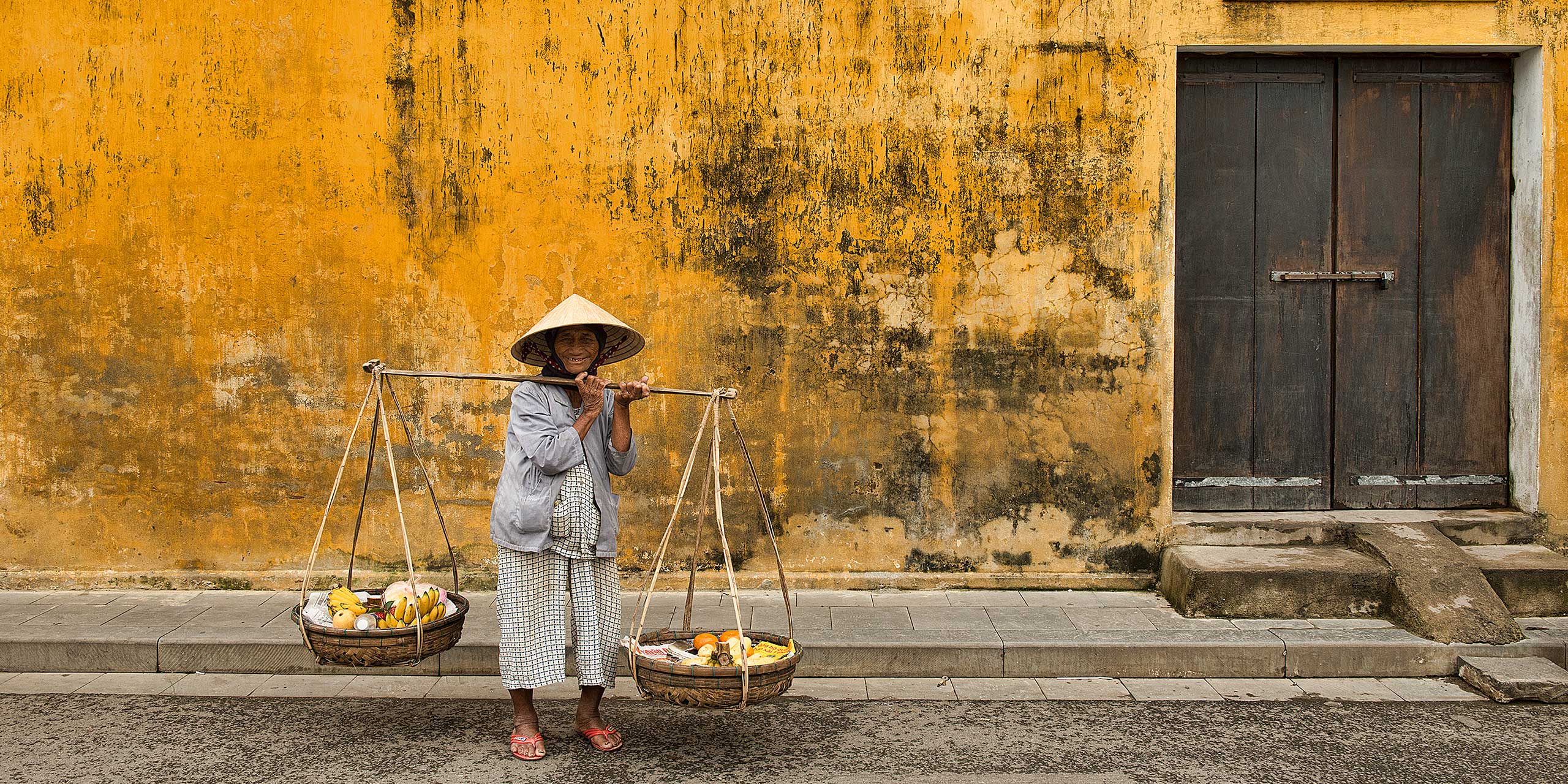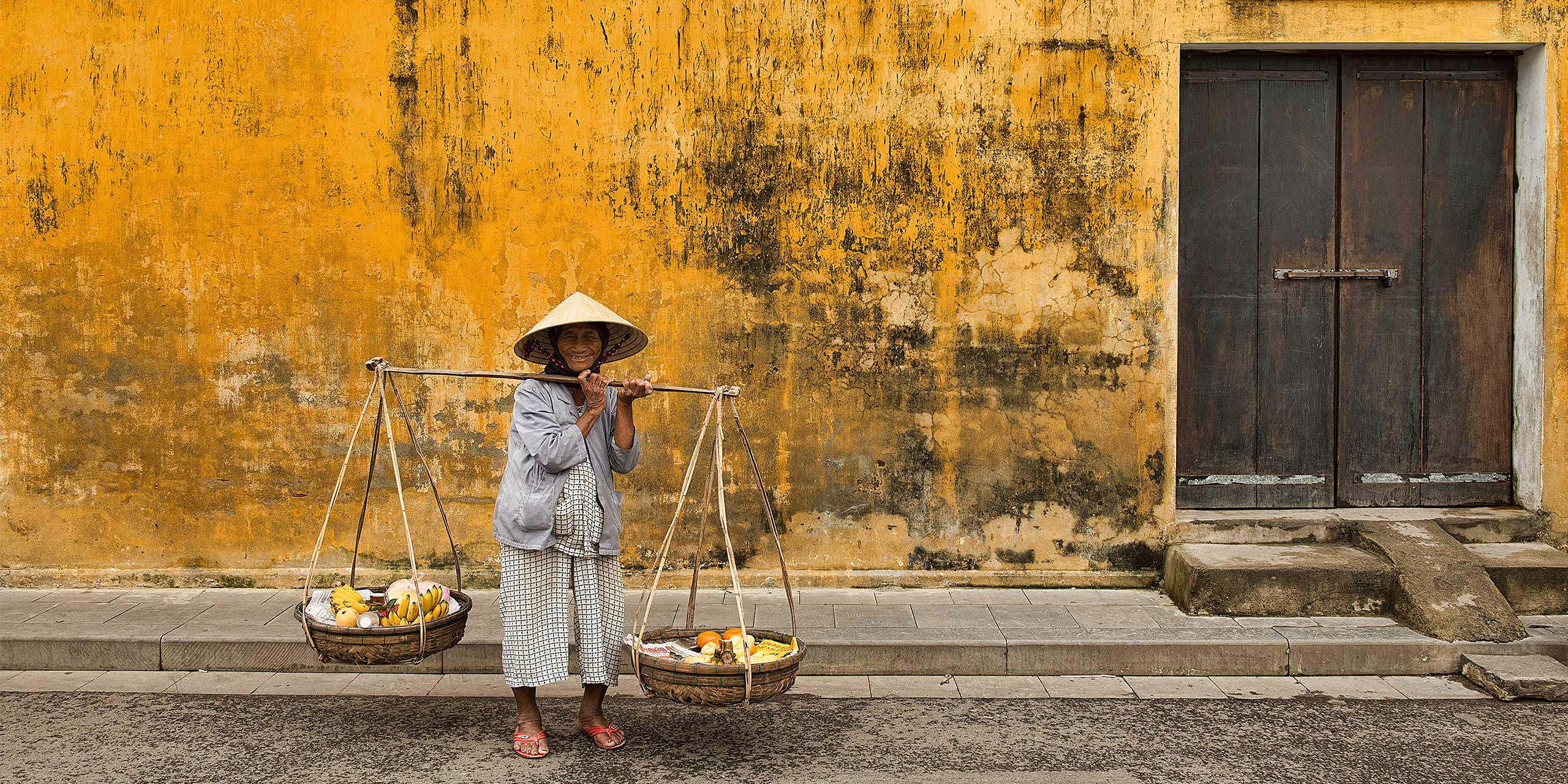
As a travel photographer I get excited anytime I’m heading to the airport with my camera bag in tow. Yet while there are always photographic stories to be found, some places are just naturally vivid with picture-worthy opportunities.
Hoi An is one of them. This old Southeast Asian trading port is an architectural gem, a mélange of colonial and Asian influences, cobbled streets, colorful lanterns, and fading yellow walls that serve as the perfect backdrop to its street life.
The only effort a photographer needs to expend is to sate oneself and stay hydrated with banh mi sandwiches and cups of sweet, iced coffee.
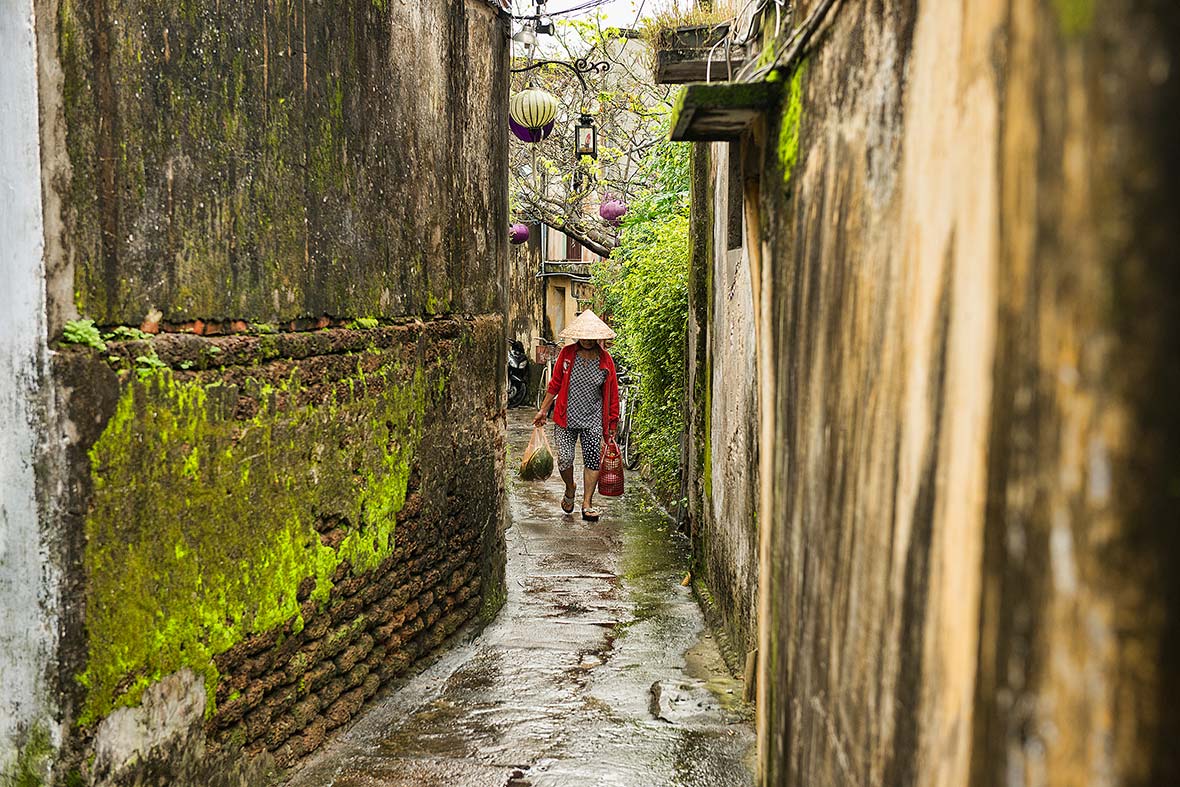
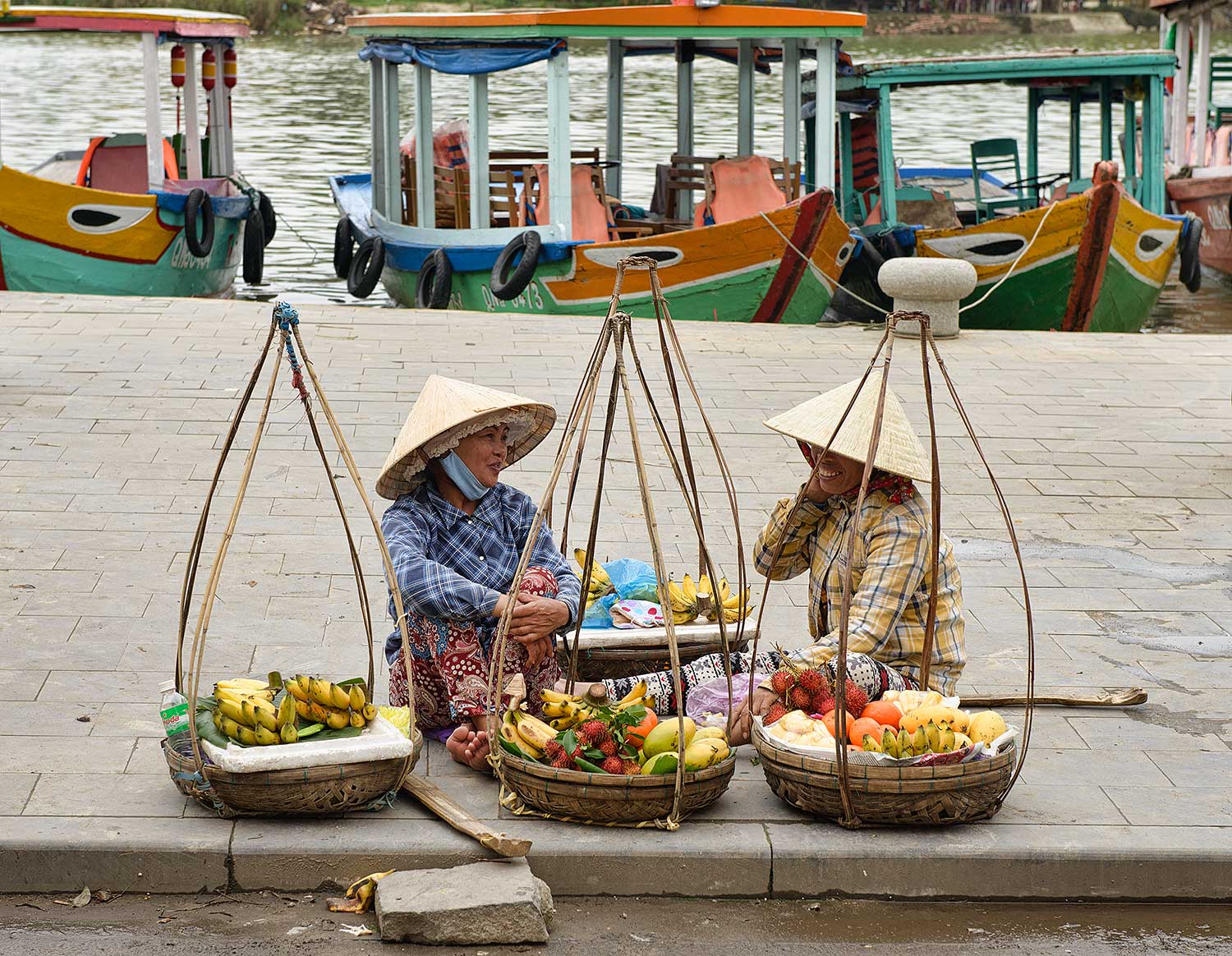
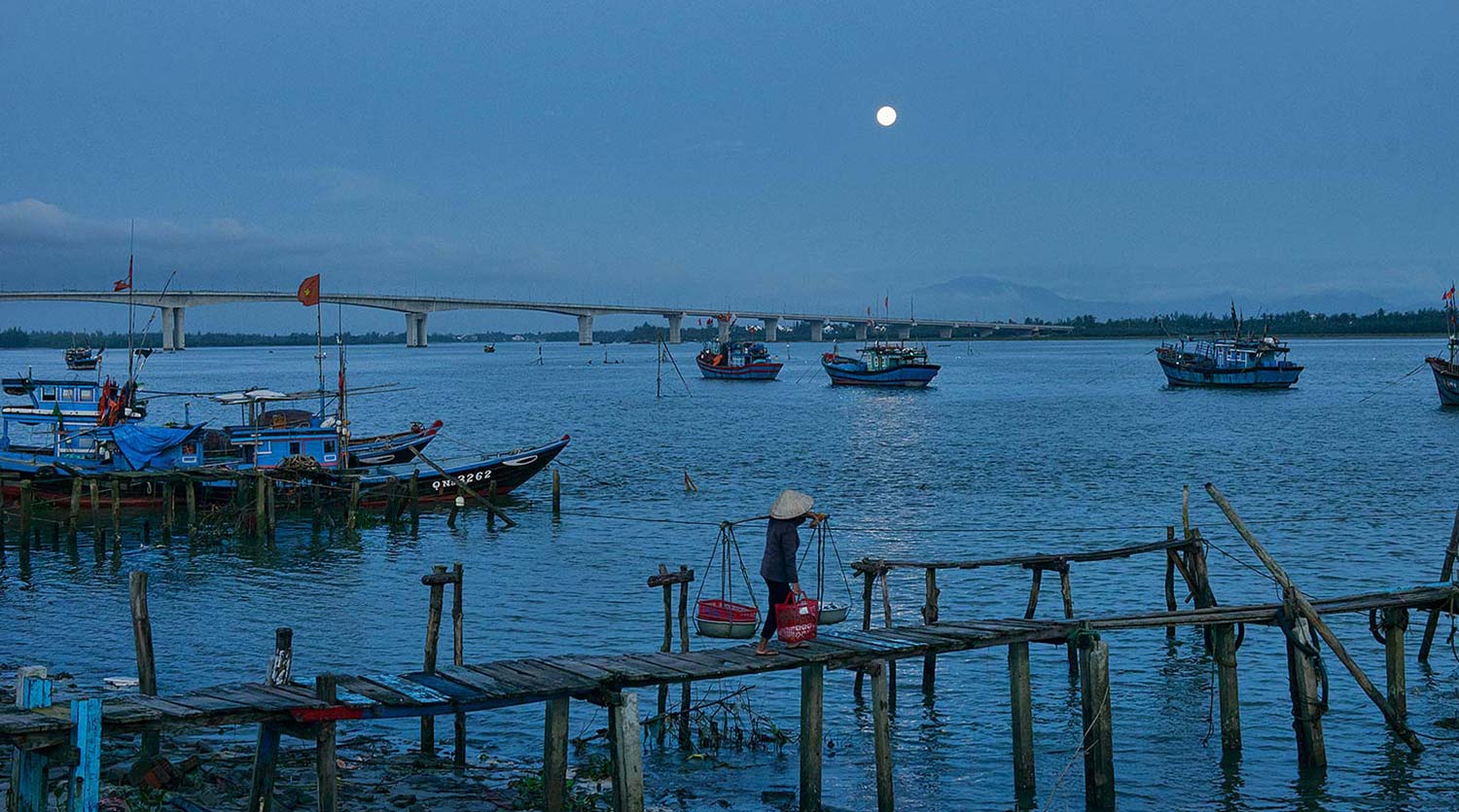
Hoi An is the equivalent of an open-air photo studio, I think to myself as I bicycle out to a nearby fishing pier at dawn. The full moon is still up, illuminating a vendor in her nón lá conical bamboo hat, precariously balancing her shoulder pole with twin baskets as she makes her way along the dock, preparing to sell her wares to incoming fishermen.
Other than waking up early and making the effort to get out here, I didn’t plan any of this. Heck, I didn’t even know the moon was full when I went to bed last night, and yet everything that I’m seeing through the lens looks perfect, as if it were all staged.
Much of Vietnam can be like this for photographers. There is still so much street life, so much action, so much color. I remember once returning to the US right after having spent several months in Vietnam, and meeting up with a Vietnamese friend and asking him how he could possibly manage to live in America and not feel like he was in a soulless morgue?
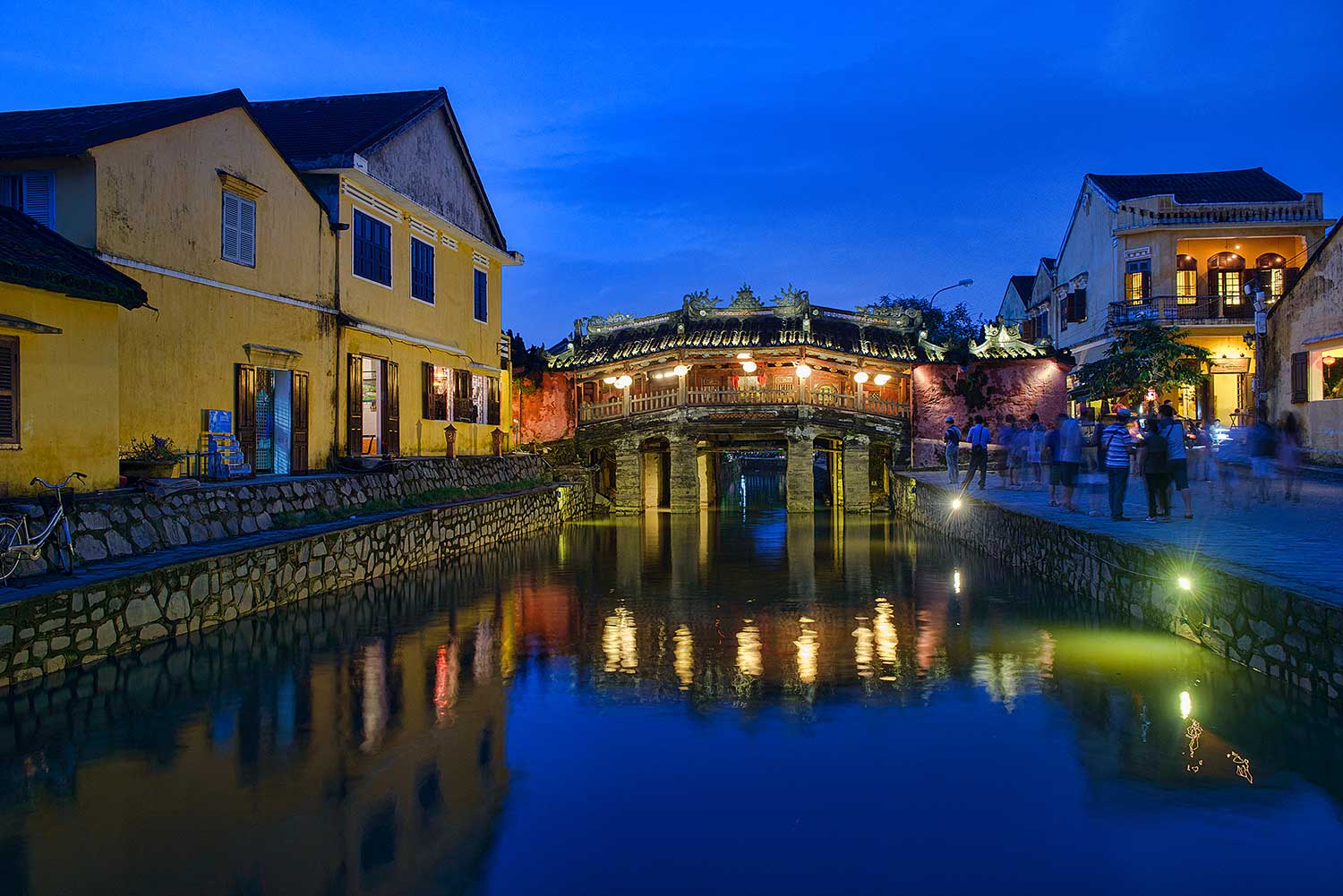
At times though, Vietnam can be too intense, too in your face. Too many people, too many motorbikes, too much noise. And while Hoi An can be guilty of all of the above, not to mention being packed to the gills with tourists during the day (hordes come over on tours from nearby Danang), it overrides all of these detriments with oodles of charm.
Records of this area date back to the 2nd century when the Malayo-Polynesian Cham people inhabited the region and later used Hoi An as a port for the burgeoning spice trade.
The Portuguese arrived in the 15th century, as well as the Japanese, who considered the town to be the best spot for trade in Southeast Asia, creating a settlement and building a covered footbridge with a temple that linked their neighborhood to a Chinese one across the canal. Today, Chùa Cầu as it is called, is the most photographed place in town, and is even featured on the back of VND20,000 banknotes.
I like coming here during blue hour, between sunset and dark, when the bridge lights go on and it is reflected in the water.
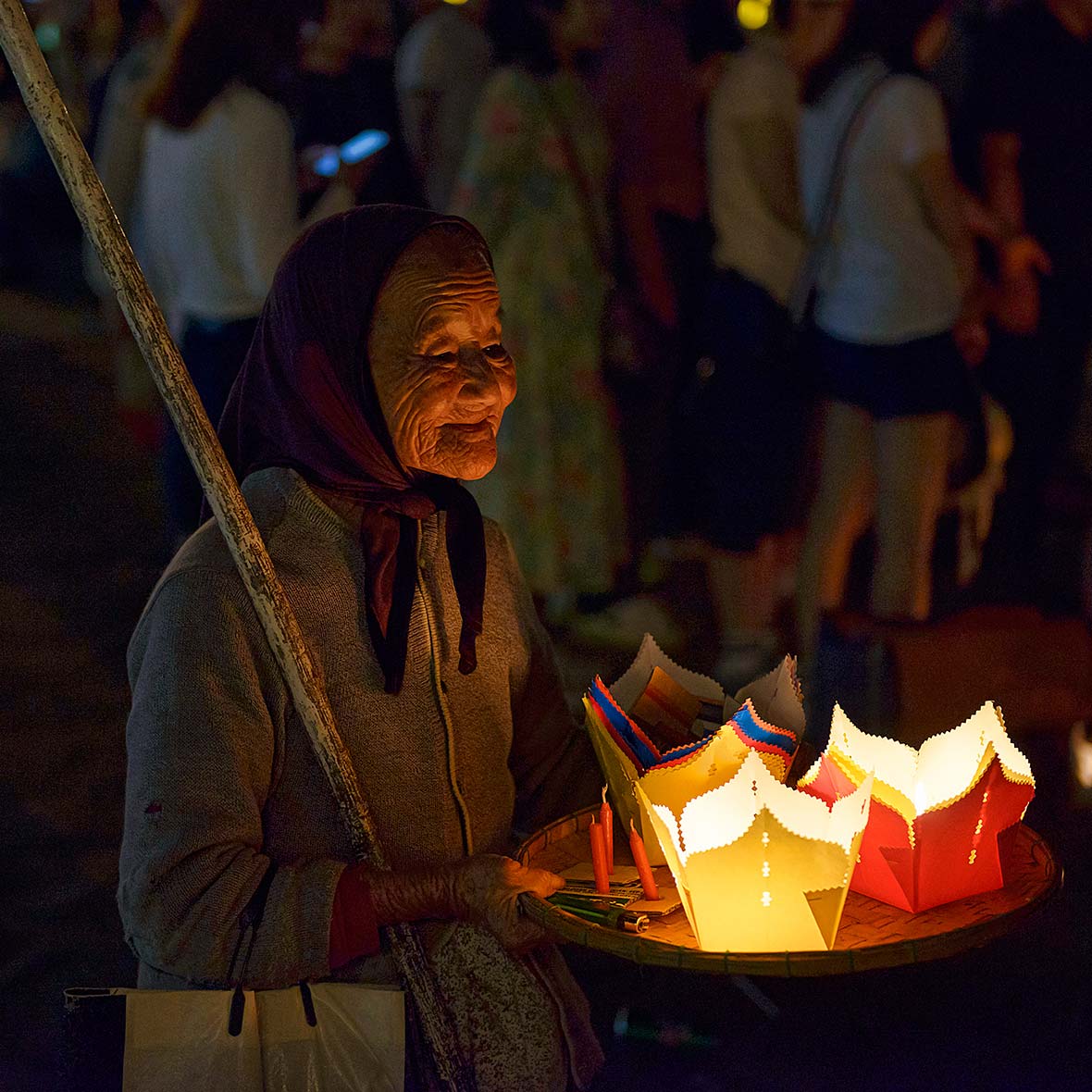
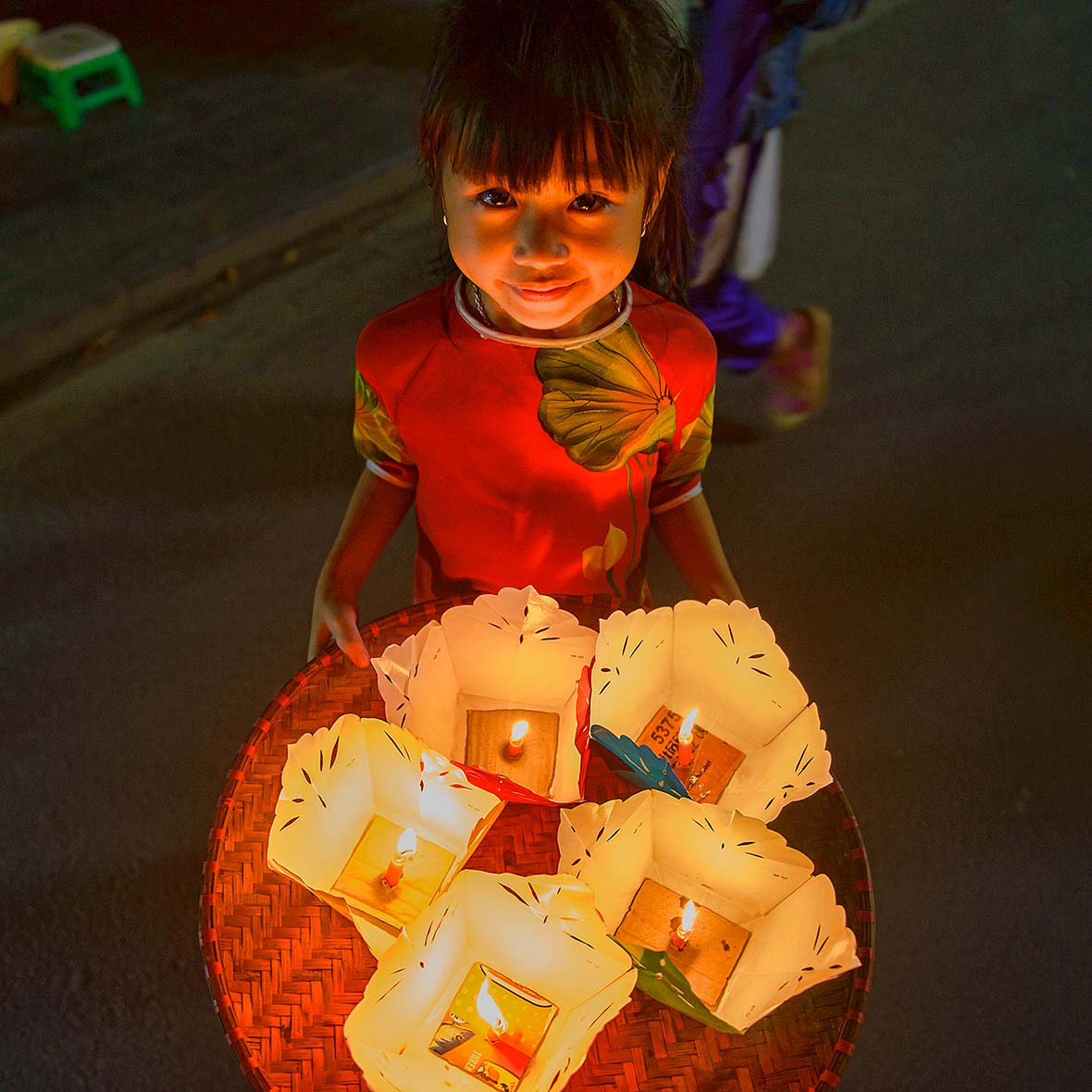
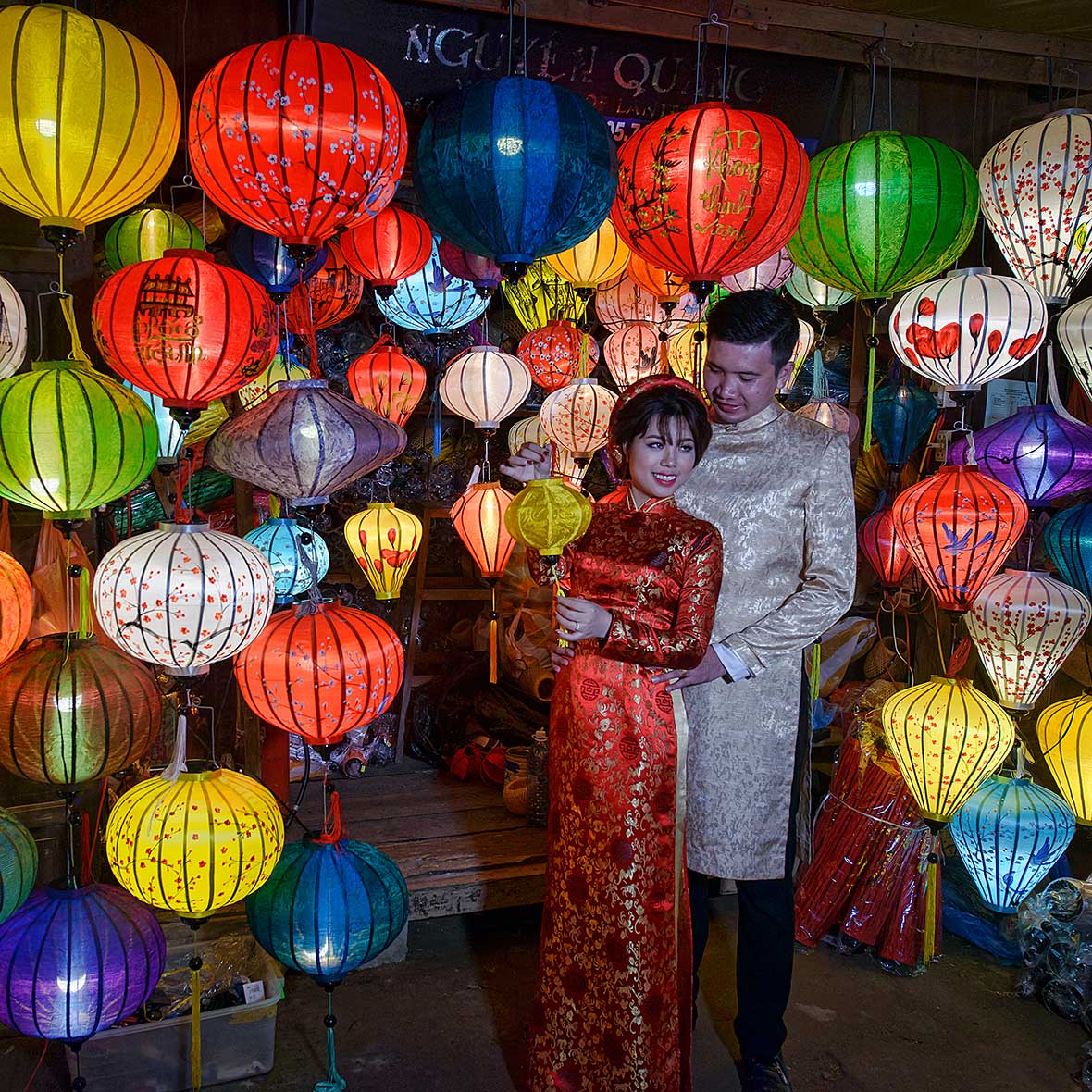
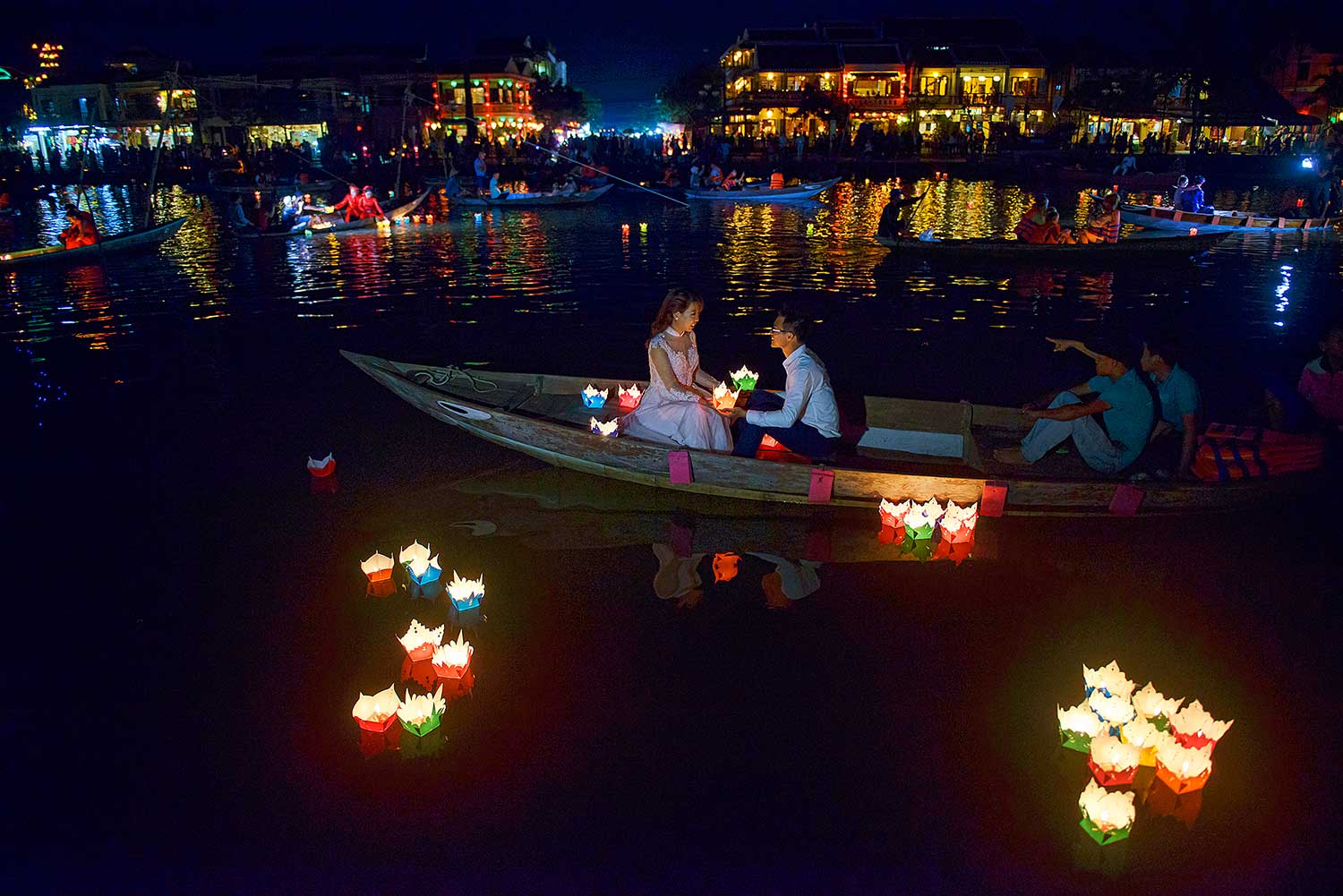
Even better yet is being here during the full moon. I had no idea at the time, but during each month’s lunar moon, Hoi An holds a lantern festival which pays homage to its bygone days, as well as reducing its electrical usage. Shops are draped with candle lanterns, and even more magical, out on the Thu Bon River, couples take rowboats out and float paper lanterns they’ve bought from vendors, setting the whole riverside alight in soft color. Visitors and locals alike get dressed up in áo dài traditional tunics, and it’s all hopelessly romantic.
Back on land, Hoi An must have the greatest concentration of natural backdrops in the world. There are around 1000 ancient homes and buildings here, many dating back to the 16th century, and there’s a fantastic mix of Chinese, local, colonial, and other architectural styles.
But the dominating theme across town is yellow. The walls, alleys, and facades here are all a striking golden butter color. Some say that yellow was used because it is a color associated with royalty, prosperity, and good luck in Vietnamese culture, whereas the more practically minded have said that yellow doesn’t heat up as much as other hues, a bonus in the tropical heat.
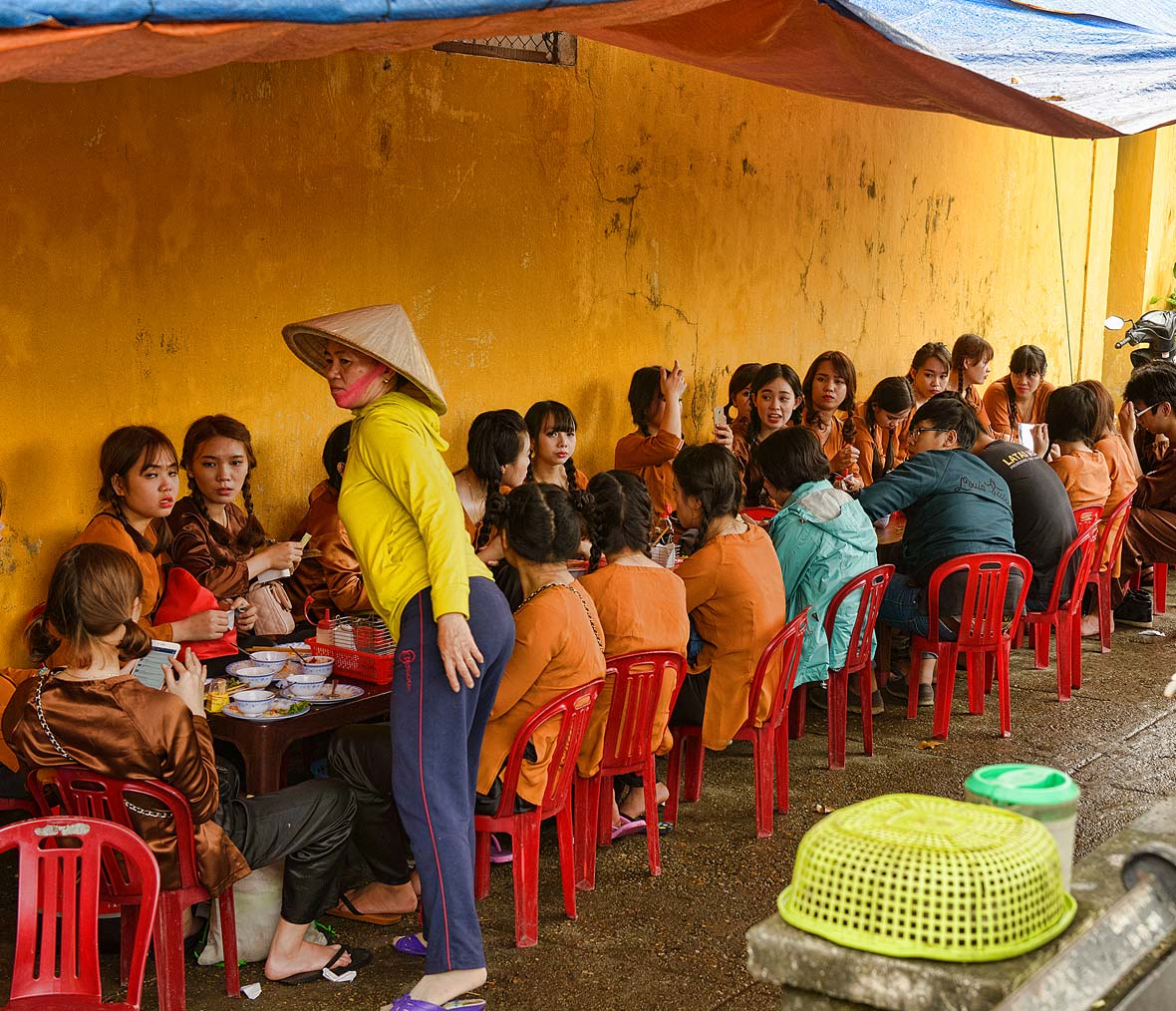
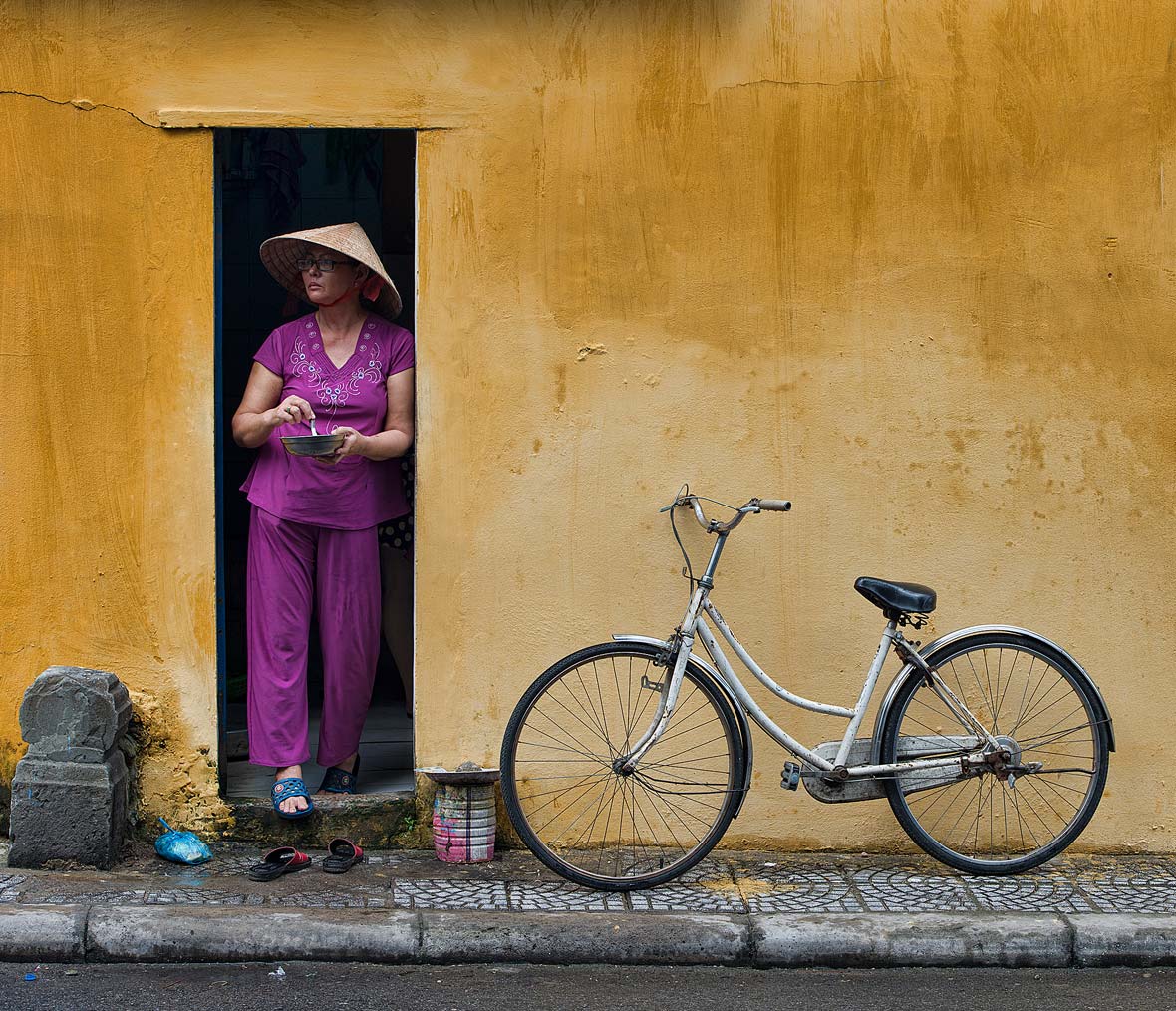
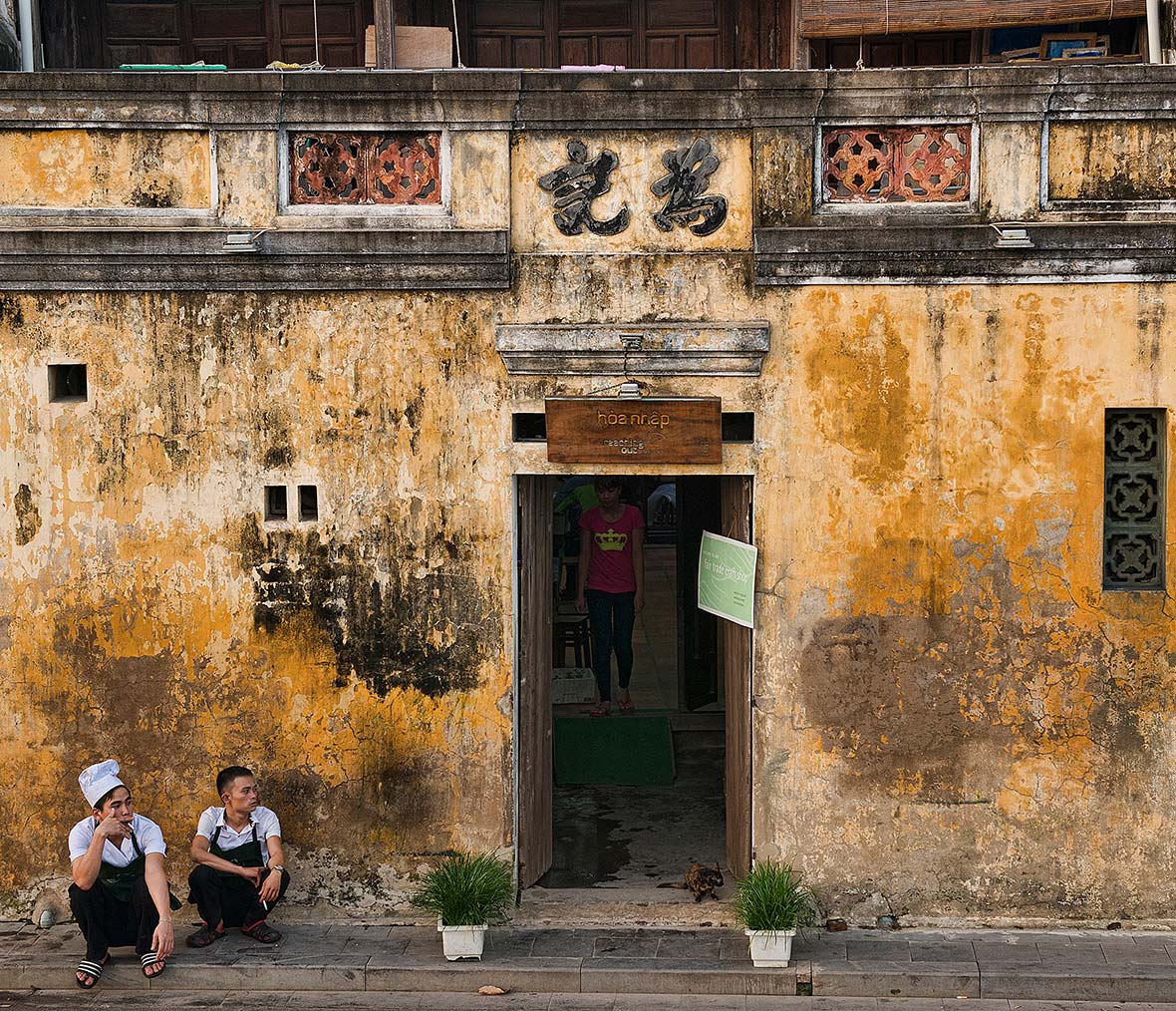
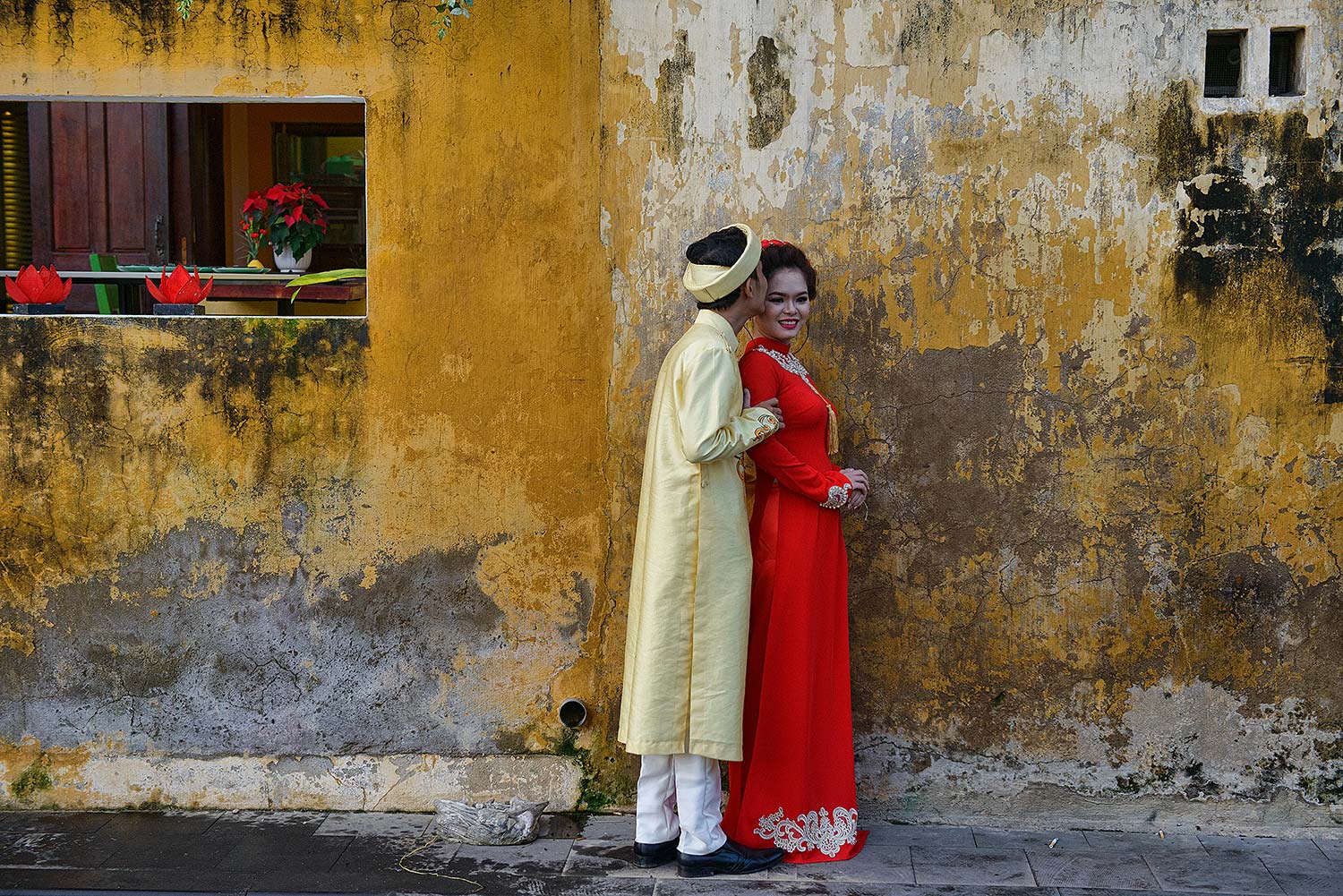
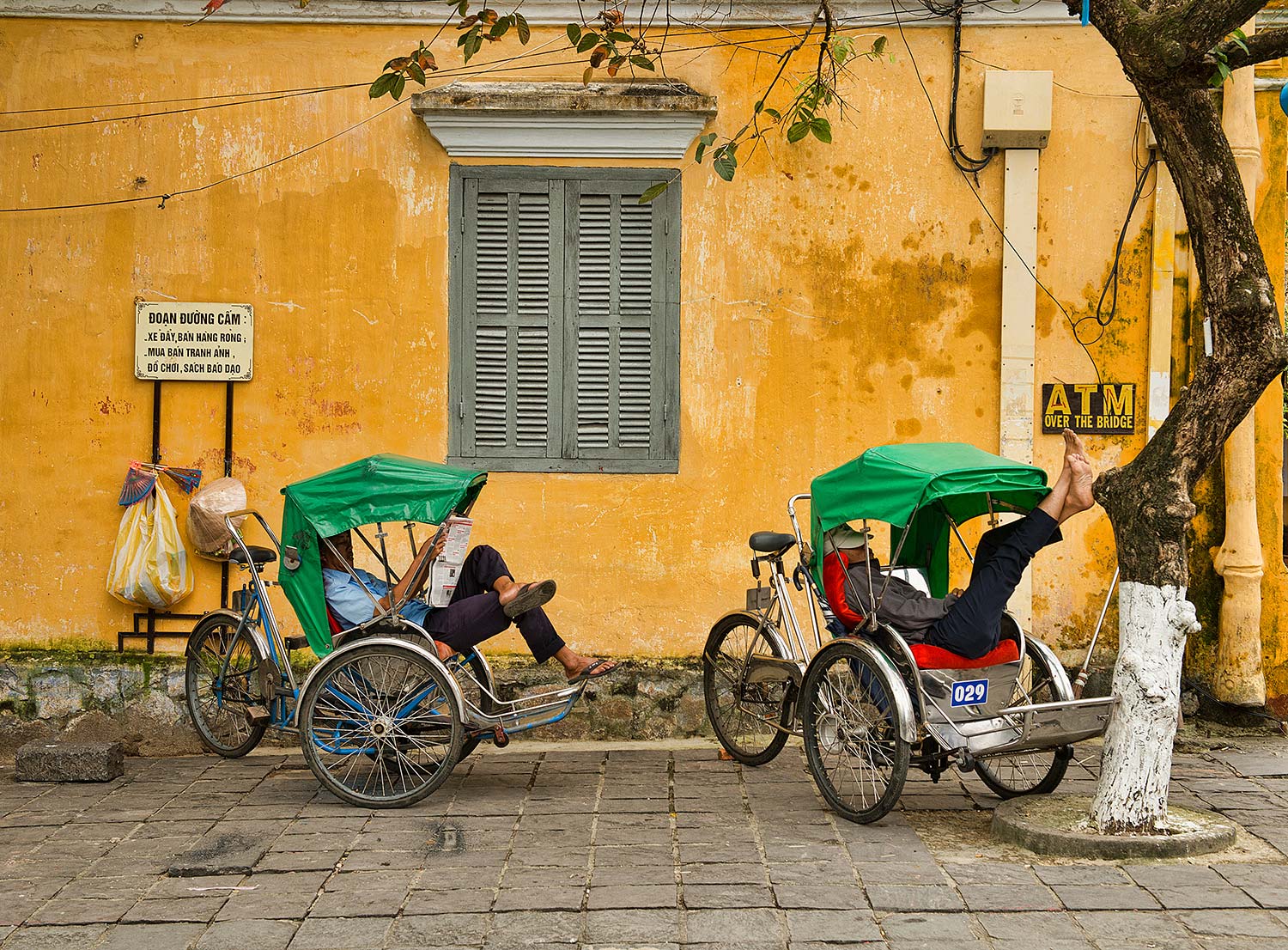
Whatever the reason, not only does it give Hoi An a vibrant feel, but for shutterbugs, it creates the most gorgeous natural wallpaper. Food sellers set up shop up against the amber walls, cyclo drivers take naps in their shade, and there’s an ongoing parade of iconic Vietnam scenes, from hats to bicycles to hawkers. And this isn’t even counting the tourists.
Not surprisingly, Hoi An is considered to be the most romantic town in Vietnam, and plenty of couples come here for weddings, honeymoons, and photoshoots. Wandering around the atmospheric alleyways, one comes across lovebirds in embraces, sneaking furtive kisses, being as enraptured as everyone else by Hoi An’s charms.
Even taking a break from being behind the lens, there are still photo-worthy moments. I call in at Bánh Mì Phượng, a hole in the wall baguette sandwich shop that was made world famous by Anthony Bourdain’s visits here. The humble eatery now sees daily long lines outside, everyone happily waiting to sample the pate, mayo, and fish paste sandwiches served with an egg on top, where everything from the assembly line cooks to the hungry patrons and sandwiches themselves is portrait-worthy.
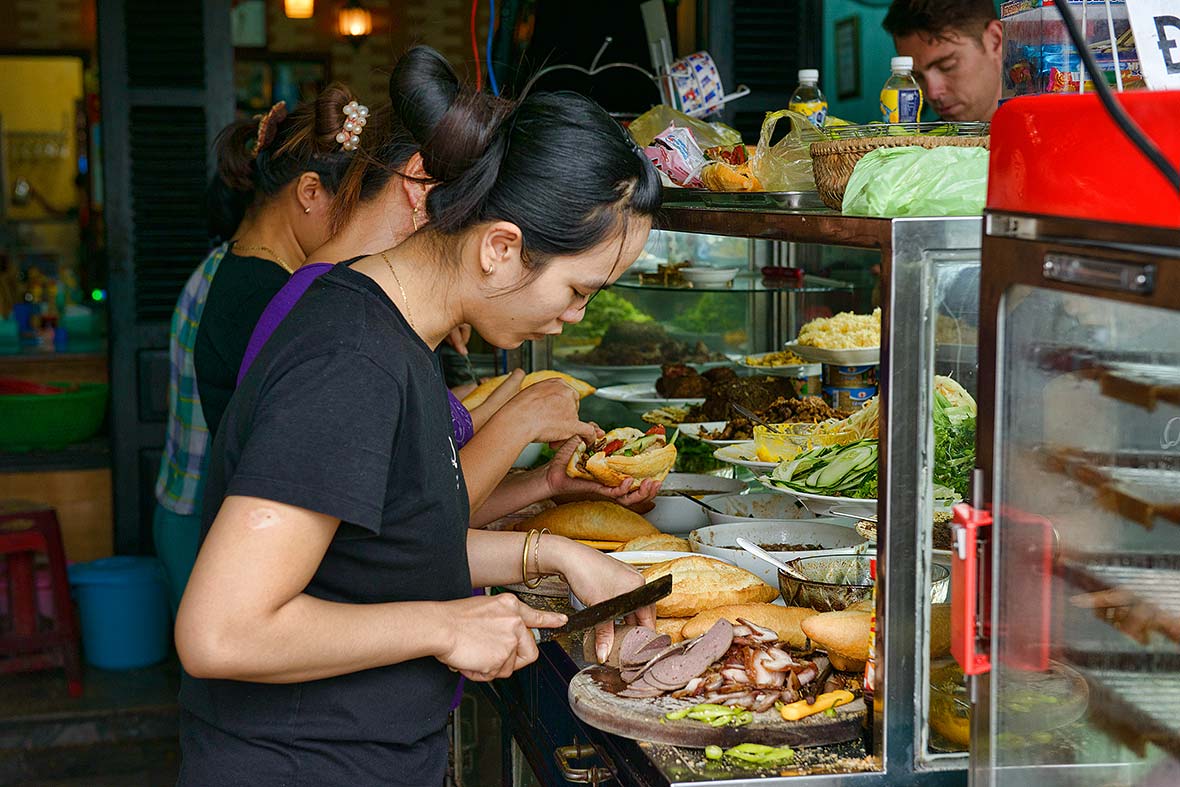
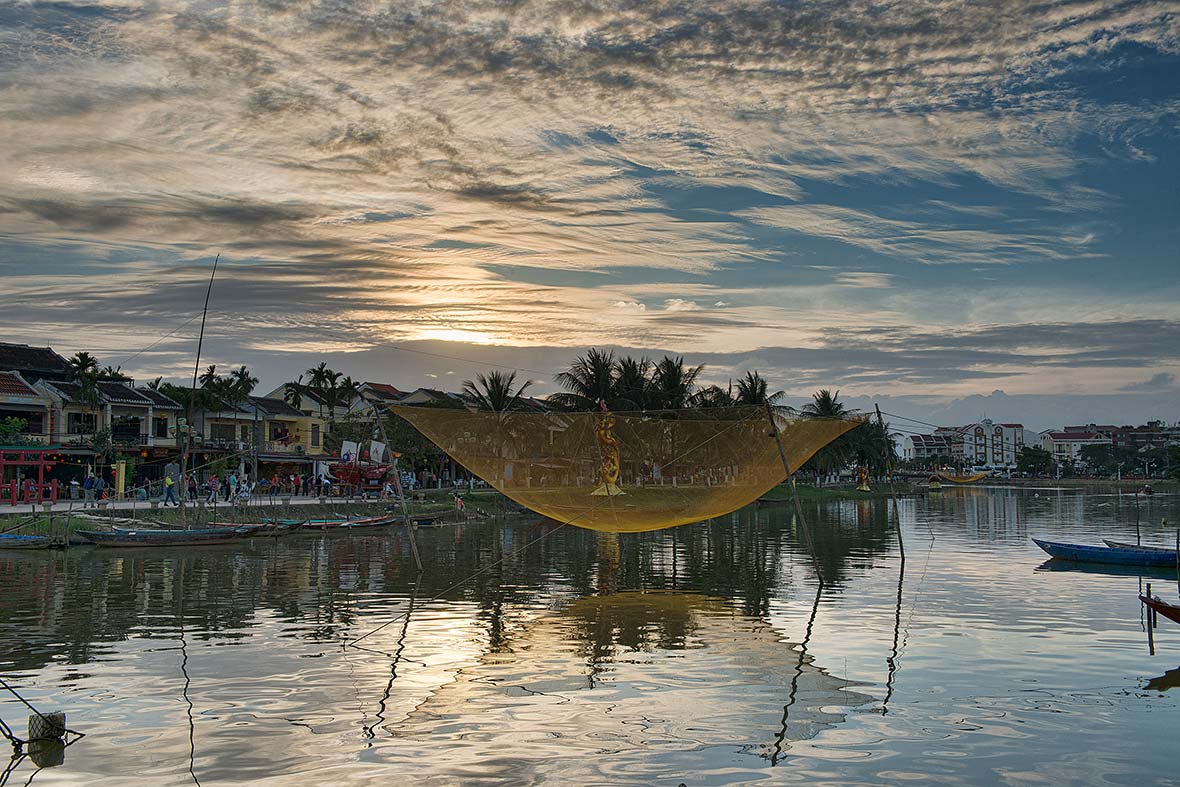
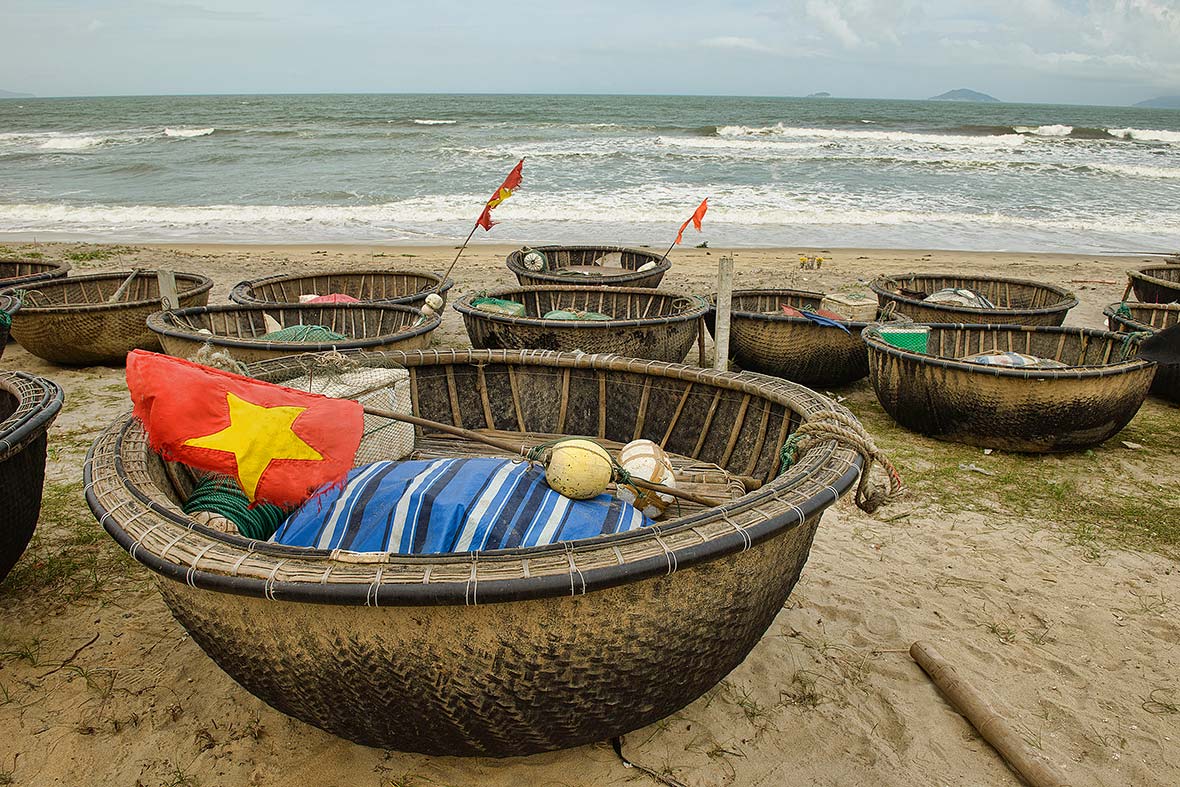
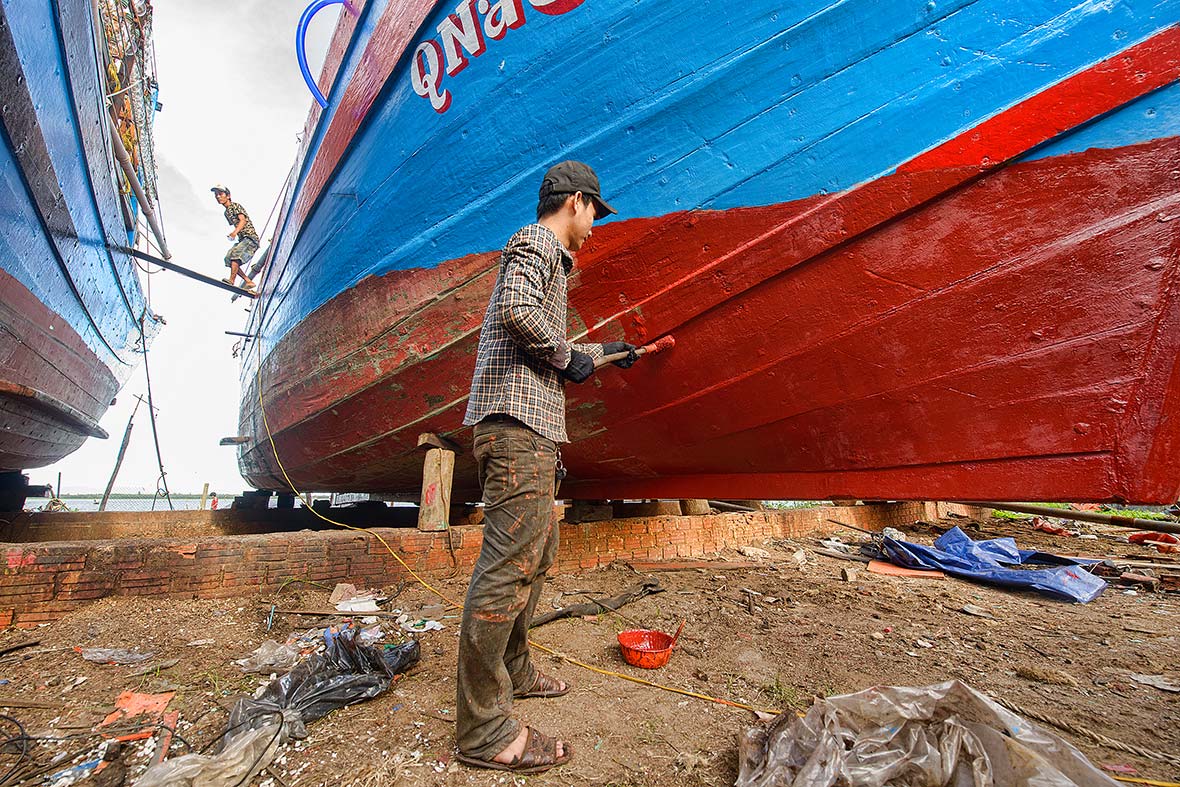
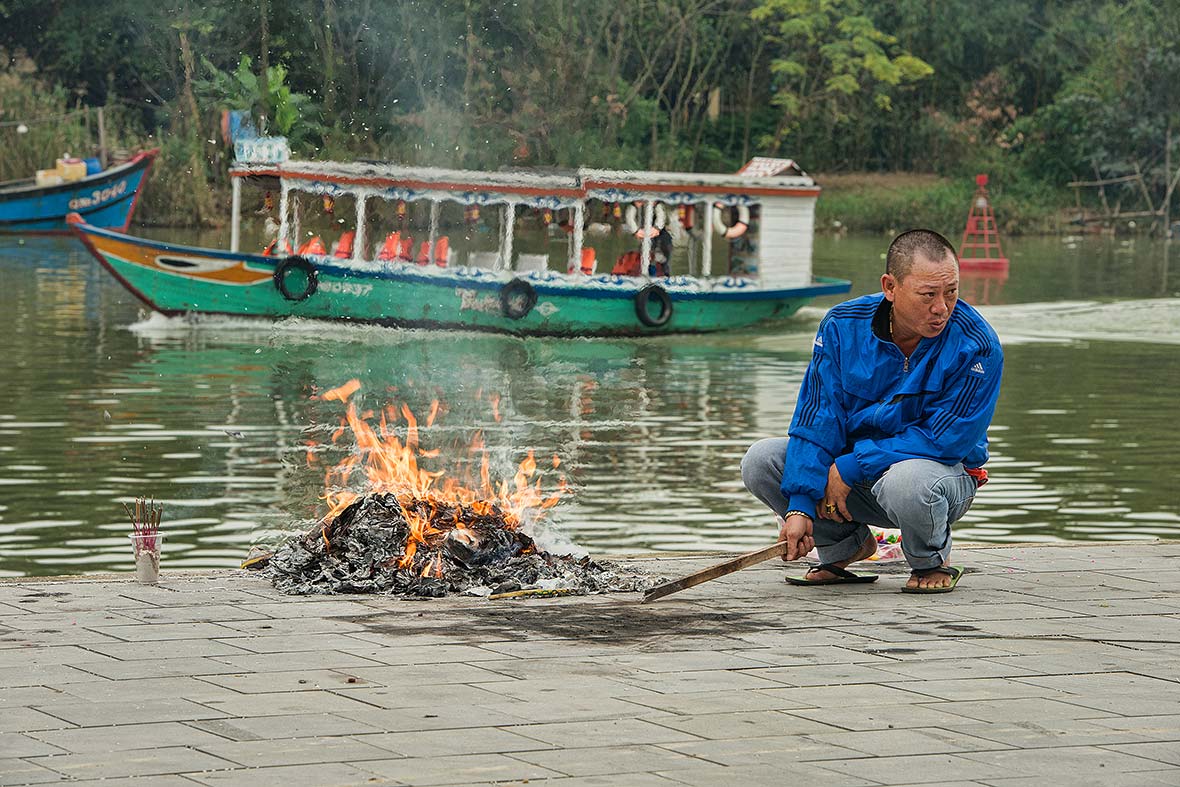
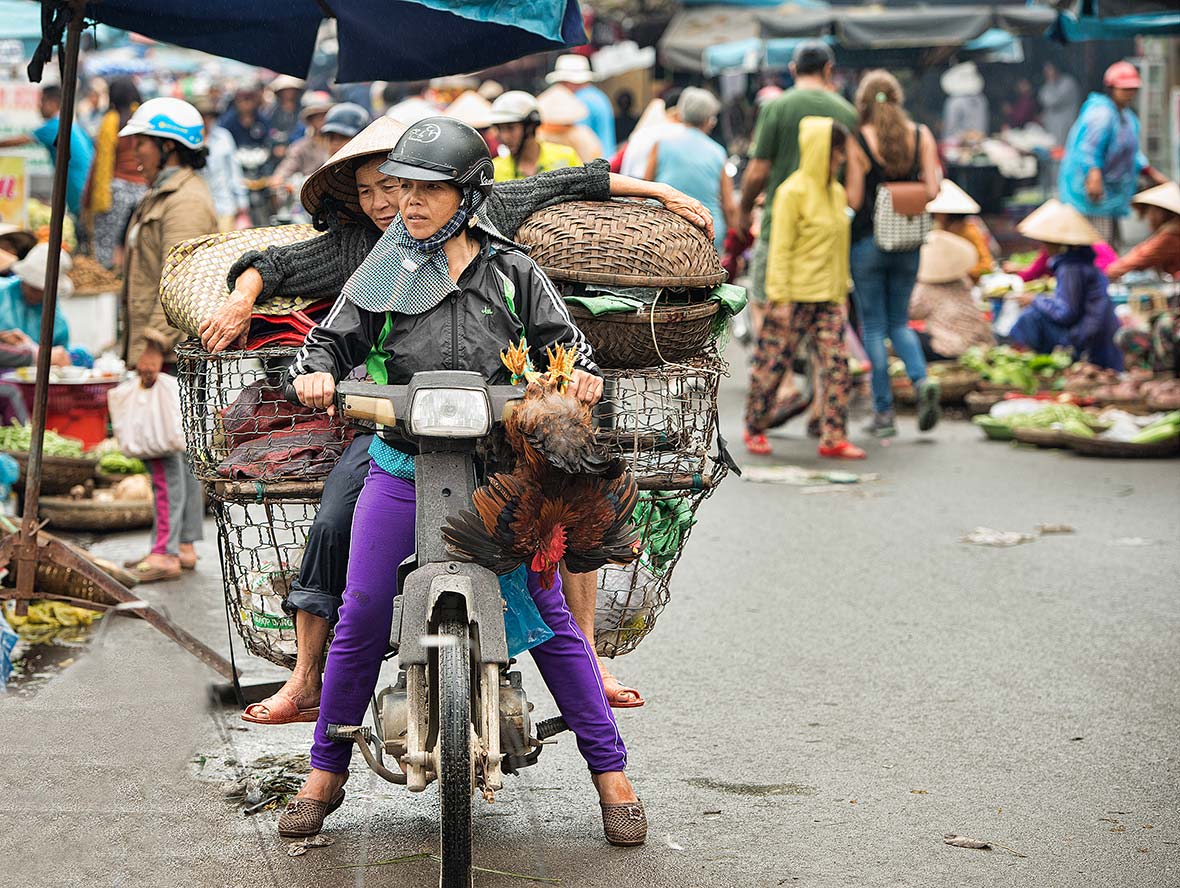
What is so captivating about Hoi An is that so many of the “touristic” images and sights are not created just for the visitors, but rather a part of longstanding traditions. The huge fishing nets along the Thu Bon River are raised by ropes and bamboo rollers that have enabled fishermen to easily haul in their catch, and the “basket” boats that tourists are now offered spins in have a bit of history. The boats, made from bamboo and cow dung, were more stable in avoiding waves than traditional vessels, sitting on top of the water, and a more captivating take on their origin says that during colonial rule, the French imposed taxes on fishing boats. to which the locals responded by creating the baskets, which they said weren’t “boats” at all!
Early mornings are the best here. The tour buses from Danang have yet to arrive, and save for the prowling photographers, locals are the only ones up, playing out scenes that have defined small town life here for ages. During the full moon (as well as during the Vietnamese New Year), people come down to the river to burn money. The cash isn’t real, it’s known as joss money, often sold as stacks of fake $100 banknotes, and is meant as an offering of respect to one’s ancestors, to ensure they have luck and no evil spirits in the afterlife.
While a man crouches down, watching the last of his paper stacks turn to ashes, women arrive on motorbikes loaded down with baskets of live chickens. These undoubtedly will eventually make their way to the steaming pots of pho noodles which nearby vendors are busy cooking, dishing them out to early morning diners who sit on small red plastic stools at impromptu street eateries. I force myself to put my camera away for a while, as I’m both sated and famished at the same time.

